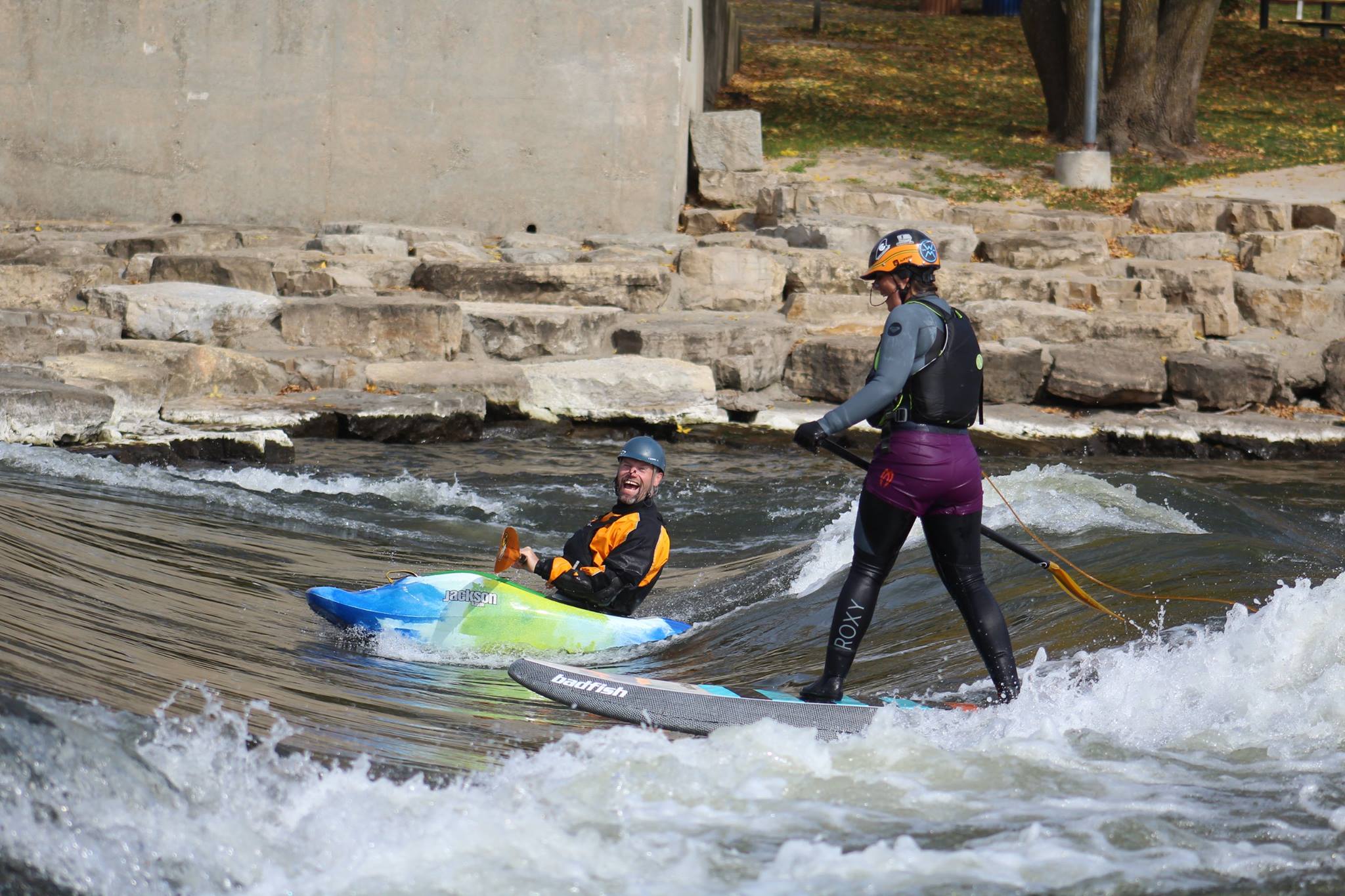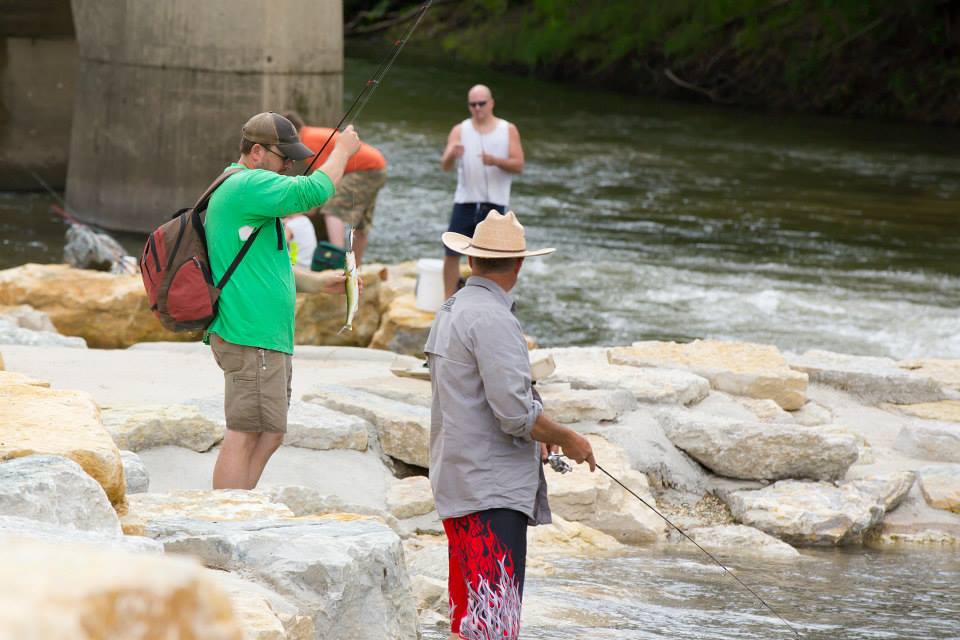Back to the River
By Katy Heggen on December 19, 2017 in Blog
“If you build it, they will come."
This familiar “Field of Dreams” reference tends to elicit eye-rolls from long-time Iowans who have heard their fair share of fictitious Shoeless Joe Jackson quotes.
But as more small towns across the state begin to look to the natural resources in their own backyard as an opportunity to revitalize their community, it’s hard not to think that perhaps Ray Kinsella was on to something.
“Most residential towns in Iowa were founded on a river or railroad,” said INHF Trails and Greenways Director Andrea Boulton. “The role of both — especially in small towns — has changed. Often you’re left with areas in the middle of town that aren’t as appealing as they could be.”
But the potential is there. And with a little vision, proper support and a lot of determination, natural features that once brought life and economic activity to these communities, can again.
Asking “what if?”
That is precisely the question that was posed in Manchester, a charming town on the banks of the Maquoketa River in northeastern Iowa. In 2008, a small group of residents formed a committee to make city improvements. During a brainstorming session, the seed of an idea — a whitewater park right through the heart of downtown — took root.
“They didn’t want Manchester to become a ghost town,” said Molly Hanson, executive director of Iowa Rivers Revival, a nonprofit river education and advocacy organization that awarded Manchester ‘Iowa River Town of the Year’ in 2015, the same year the park opened. “They took a look around and asked ‘what are our assets? What can we embrace and enhance that’s already here?’ When you look at all the options, the ones that tend to rise to the top are natural resources.”
And embrace it they did. Manchester set to work building the largest whitewater park in Iowa, an 800-foot course and access point that invites all — recreationists and spectators alike — to get back to the river. By removing the existing low head dam (structures that disrupt the natural flow of rivers and can be dangerous for river users), constructing the course and restoring the shoreline, Manchester was able to reclaim its riverbank to benefit conservation, outdoor recreation opportunities, the community and the local economy.
Such was also the case in Charles City, a quaint town on the Cedar River in northeast Iowa, which became the home of Iowa’s first whitewater park in 2011. Last year, the town was an overnight stop for both RAGBRAI and Project AWARE (A Watershed Awareness River Expedition).
Elkader, an inviting town in northeast Iowa along the Turkey River, opened an impressive course in 2014. The project, which was seized as an opportunity to reclaim the town’s relationship to the river following the record-setting 2008 floods, is yet another example of Iowa ingenuity.
“The river has always been there, it’s not something brand new,” said Hanson. “It’s a shift. It’s an adaptation. They’re re-embracing an old identity.”
On all three projects, residents and city officials worked together to build community support, source technical assistance and secure funding from state grants and private donations — many from the community itself.
“Those are the projects we’ve seen be most successful,” said Boulton. “When the community invests their time, energy and resources into a project like this, other things start happening there, too.”
Building a destination
These and other conservation projects, including the state’s nearly 8,000 miles of multi-use biking, hiking and water trails; parks; campsites; nature preserves — many made possible in part by Iowa Natural Heritage Foundation — are helping make Iowa an eco-tourism destination. So are the businesses like outdoor outfitters, microbreweries, local restaurants and other establishments that support and enhance these experiences for residents and visitors.
According to the Outdoor Industry Association, Iowa’s outdoor recreation economy generates $8.7 billion in consumer spending, 83,000 direct jobs and $649 million in state and local tax revenue. Travel Iowa recently found that the number one and three reasons visitors travel to Iowa are nature, scenery and outdoor adventure.
“People want to have an experience. The more things there are to do in an area, the more likely they are to go there,” said INHF Senior Land Conservation Director Heather Jobst. “When you get enough of these projects in one part of the state, that creates outdoor recreation corridors, which attracts more people and opportunities. There’s so much more here than people realize, and it’s worth investing in.”
 Interest in outdoor recreation opportunities is high, funding requests consistently outnumber available dollars and an increasing number of projects are gaining local and national attention. However, state funding to help support these projects has remained relatively stagnant, and in many cases has dramatically decreased. Last year, the Iowa legislature zeroed out funding for water trails and dam mitigation. The recreational trail budget is down to $1 million. REAP funding was cut from $16 million to $12 million,and seven years after its creation, the Natural Resources and Outdoor Recreation Trust Fund still sits empty.
Interest in outdoor recreation opportunities is high, funding requests consistently outnumber available dollars and an increasing number of projects are gaining local and national attention. However, state funding to help support these projects has remained relatively stagnant, and in many cases has dramatically decreased. Last year, the Iowa legislature zeroed out funding for water trails and dam mitigation. The recreational trail budget is down to $1 million. REAP funding was cut from $16 million to $12 million,and seven years after its creation, the Natural Resources and Outdoor Recreation Trust Fund still sits empty.
“Investments in public land and Iowa’s outdoors are in fact investments in Iowa and its communities,” Boulton says. “It’s a reason to come here. Live here. Stay here. Explore here. A place to have an adventure.” A place that makes you wonder if this is, indeed, heaven.